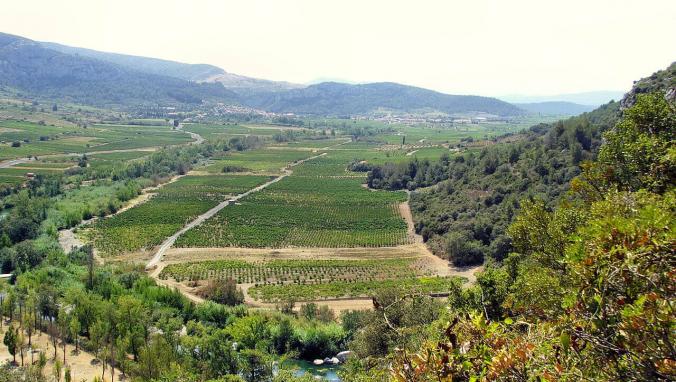Cotes du Roussillon Villages Latour de France is an appellation for red wines from the parish of Latour de France in the Roussillon wine region of southern France. As a recognized source of higher-quality wines, the village has earned the right to append its name to the existing Cotes du Roussillon Villages title, as have the parishes of Caramany, Lesquerde and Tautavel.
The Cotes du Roussillon Villages appellation covers an area in the hillier northern third of Roussillon, near Fitou and Corbieres. It represents higher-quality table wines that are a step up in quality from the more generic Cotes du Roussillon appellation.
Latour de France is located towards the western edge of the catchment area, halfway between Caramany and Tautavel. The village is situated on a bend in the Agly river, which winds its way through a number of Roussillon's finest vineyards en route to the Mediterranean Sea. Latour de France is also within the eligibility zone to make the sweet wines of the Rivesaltes appellation.
The soils around Latour de France have a high proportion of granite-derived schist and gneiss, as well as some clay and limestone, thanks to the presence of the river – something which is lacking in the other villages of the appellation. Granite has been identified as being a valuable part of many French terroirs, as it is an efficient heat retainer, provides rapid drainage and is of low fertility, forcing vines to form deep, strong root systems.
The climate in Latour de France is definitively Mediterranean, with long, hot summers and relatively mild winters. This area experiences more sunshine (325 days per year) than any other part of France.
Carignan, Grenache and Syrah are the principal grape varieties used to produce Cotes du Roussillon Villages Latour de France wines. Carignan, which historically was the main component, was vinified by carbonic maceration in order to accentuate fruitier flavors in the wines, rather than its tannic, rustic character. Modern producers now use standard fermentation methods and increasing quantities of Syrah and Grenache to bring greater complexity to the wines and make them more appealing to international consumers.
